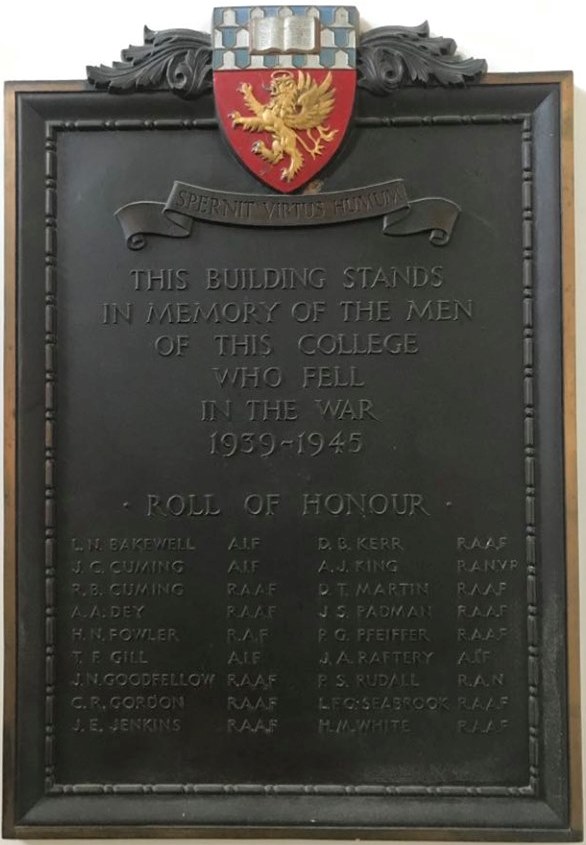A cross of poppies made in College and research on the lives of St Mark’s Collegians killed in World War II are among the ways that College students will mark Anzac Day and Founders’ Day this weekend.
The founders of the College nearly a century ago had all in some way been affected, in many cases very deeply, by World War I, which had just ended. They named the College “St Mark’s” after the Saint on whose day the Anzac landings at Gallipoli had taken place in 1915.
Each year the College marks Founders’ Day on the Sunday closest to Anzac Day. The College’s annual observances honour the sacrifices of those who served and died in war – including 20 members of the College killed in World War II – and also the sacrifices of those who worked and gave to create and to sustain the College since 1925.
This year, the COVID-19 pandemic prevents the usual gatherings, but resident students have initiated a number of activities to remember and to honour the fallen.
Throughout this week, a student who has been researching Collegians killed in World War II is posting accounts of their lives on the internal student Facebook page.
These names are recorded in the memorial plaque in the War Memorial Building, opened in 1950 following a post-war fund-raising appeal. (Photograph above.)
The names of the Collegians killed in World War II will be also written in chalk on stone pavings near the pond to honour them on Anzac Day.
Also throughout this week, students are making paper poppies which together will form a cross to be placed in front of Downer House on Anzac Day.
Within social distancing requirements and recommendations from the RSL, some students will “Light Up the Dawn” with a sombre 6 a.m. observance on Anzac Day. Later in the morning, The Last Post and, following a silence of reflection, Reveille will be played throughout the College.
The RSL has also suggested that, to mark Anzac Day, people may wish to visit a local war memorial at any time of the day, within exercise/recreation and social distancing conditions.
To help fellow students with this, some St Mark’s students have prepared a map with photographs to illustrate a walk that can be taken from the College to the National War Memorial on North Terrace, past various other war memorials along the way. This too is going on the internal Facebook page.
As members of the College reflect on the sacrifices of those who died in war, many will also give thanks for the labours and generosity of our founders. The Head of College, Professor Markwell, spoke to students and guests at the Commencement Service in February about the sacrifice and commitment to service of one of the founders, Charles Allan Seymour Hawker MP, who had been seriously injured on the Western Front in World War I, and the founding Master, Sir Archibald Grenfell Price.
They and others of the founders of the College – such as Canon Julian Bickersteth MC and Sir Henry Newland DSO, both of whom served in World War I – are remembered in various ways, including with inscriptions and portraits, around the College.
Members and friends of St Mark’s may wish to consider RSL suggestions (which may be found here and here) for various ways of marking Anzac Day on Saturday – and may wish to raise a glass to toast our founders on Founders’ Day this Sunday.
Lest we forget.
Photograph: The memorial plaque in Memorial Building. Sir Archibald Grenfell Price wrote that to these names should be added Dr William Delano Walker and Flying Officer Alexander Charles Douglas, who were killed with the Forces before hostilities commenced.


